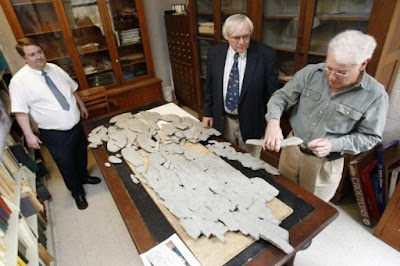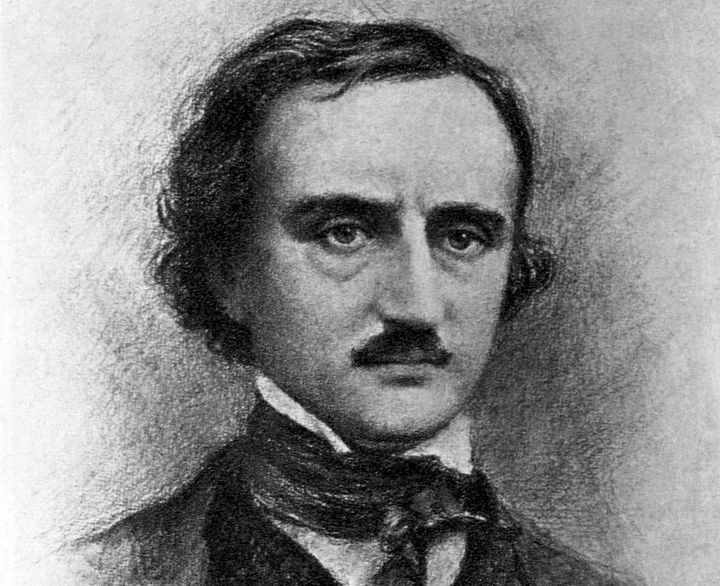In Shock Value: How a
Few Eccentric Outsiders Gave Us Nightmares, Conquered Hollywood, and
Invented Modern Horror, Jason
Zinoman offers some interesting, although rather dated, observations:
the book was published in 2011. Many of his observations could serve
as guidelines to apprentices who are interested in writing a horror
novel (or movie).
For
instance, Zinoman, in discussing Rosemary's Baby,
points out that the film is “about issues that people could relate
to—the nervousness of entering the real estate market; struggling
in a faltering, sexless marriage; and the yearning, desperate search
for fame (11-12). In fact, he says, the movie is “about the perils
of domesticity” (14).
In
addition, Zinoman declares, Roman Polanski “made the movie strictly
from Rosemary's perspective and maintained that it must always be
possible for “all the supernatural elements on it to be a series of
coincidences” (21), so that “the suspense hinges on finding out
whether the bizarre things happening . . . are real or the product
of delusion” (21).
Throughout
Shock Value, Zinoman
insists that the cause of the bizarre incidents is best left
unexplained and emphasizes the unseen, offstage incident as
preferable to the seen, onstage incident in maintaining suspense. In
fact, “in addition to the virtue of the unknown, the setting of an
indistinct mood, and . . . rooting the magical or supernatural in a
palpable realism” are “powerful ideas” (63).
Initially,
horror movies were viewed as providing the audience with a catharsis
(76), which 'assumes the audience identifies with the victims,” but
Alfred Hitchcock helped to revolutionize this accepted view of the
nature of horror films when he put “the audience on side of the
killer in Psycho and
repeatedly in the position of the voyeur.”
This
twist causes the audience to identify “with killers,” rather than
with their victims. As a result, it has been argued, this shift in
perspective no longer allowed a catharsis for viewers; instead, it
allowed “audiences to express their repressed sinful thoughts
through the monster” (77). The monster became a surrogate scapegoat
upon whom viewers could project their own lusts for violence, blood,
murder, and mayhem. The movies, once masochistic, became sadistic
(77).
Due
to his upbringing in a home in which a strict evangelical faith was
practiced, Wes Craven was more sensitive to “the allure of
self-sacrifice” than many other filmmakers, Zinoman suggests.
Craven understood that churchgoers went to church “not merely” to
escape “pain,” but also to heroically “confront it,” which
provided them a sense of “triumph” over evil (77). A horror movie
could provide the same sort of experience, vicariously, for “a
secular audience looking for the pleasure of masochism” (77).
Zinoman
cites several films that accomplish just this task. Writing of The Last House on the Left, he
states:
In
a godless world without redemption [this film] . . . includes no
struggle with faith. instead, senseless evil inspires just more
senseless evil, adding up to a nihilism that invites no happy endings
(79).
Religion
and horror are alike, the author suggests: both induce feelings of
“awe” as people are “shocked by their own helplessness,” but
religion and horror differ by how they handle people's experience of
awe: “religion helps you cope with this feeling. Horror exploits
it” (92)
From
Zinoman's observations, we can derive these story-writing tips:
- Make sure that the readers (or audience) can relate to the “issues” with which the story is concerned.
- Tell the story (or film the movie) from the main character's point of view.
- Maintain the possibility of both a natural and a supernatural explanation for the “bizarre” incidents that occur in the story.
- If a story is intended to evoke readers' or viewers' masochistic interests, focus on the main character's point of view; if the story is meant to arouse readers' or viewers' sadistic impulses, focus on the monster's perspective.
- After challenging the protagonist's faith, a religious story is apt to restore it through self-sacrifice that leads to redemption; a secular story is likely to end in nihilism, represented by anarchy and chaos.
- Whether a story is religious or secular in nature, it should maintain the possibility of either a natural interpretation or a supernatural explanation.
Zinoman also has some intriguing insights concerning John Carpenter's Halloween, but we'll save them for a future post.


































